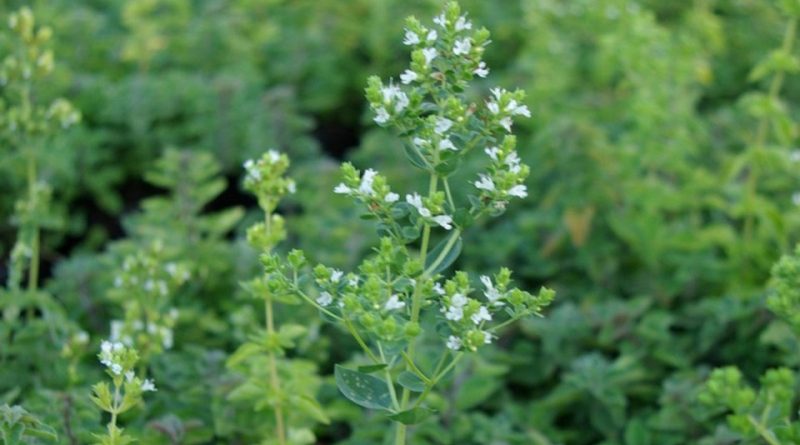Origanum heracleoticum
Origanum heracleoticum
Southern oregano (Origanum heracleoticum L.) is a herbaceous species belonging to the Lamiaceae family.
Systematic –
From a systematic point of view, it belongs to the Eukaryota Domain, Kingdom Plantae, Subregion Tracheobionta, Superdivision Spermatophyta, Division Magnoliophyta, Class Magnoliopsida, Subclass Asteridae, Order Lamiales, Family Lamiaceae, Tribe Mentheae and therefore to the Genus Origanum and to the Species O. heracleoticum.
The terms are synonymous:
– Origanum vulgare L. subsp. viridulum (Martin-Donos) Nyman .;
– Origanum hirtum Link;
– Origanum macrostachyum Link;
– Origanum virens Auct .;
– Origanum viride (Boiss.) Halácsy;
– Origanum virens var. sardoum Moris;
– Origanum virens var. siculum Benth.
Etymology –
The term Origanum comes from the Greek ὄρος óros monte and from γάνος gános showy beauty, pleasure: splendor of the mountain, reference to the natural habitat.
The specific epithet heracleoticum comes from ῾Ηράκλεια Herácleia, name of several cities of antiquity (such as the current Iraklion in Crete or the ancient Heraclea in the Magna Grecia Lucana, located near the current Policoro): of Eraclea.
Geographical Distribution and Habitat –
Southern oregano is a plant of Mediterranean origin where it grows at 200 to 1400 meters above sea level.
Its habitat is that of sparse bushes and shrubs.
Description –
Origanum heracleoticum is a perennial, hairy, intensely aromatic herbaceous species, with a size of 30-80 cm.
The stems are slightly woody at the base, more or less reddish green, erect-ascending, with white hairs.
The leaves are petiolate, with ovate lamina, whole or slightly serrated margin, green above lighter and hairy below.
The flowers are small, numerous, gathered in terminal ovoid spikelets, with white or rarely pink corolla.
The antesis is between June and August.
Cultivation –
For the cultivation of this plant the same principles apply for the Origanum vulgare, for which please refer to the following sheet.
Uses and Traditions –
Southern oregano is present in Italy and is a common plant in the Lattari Mountains, on the Sorrento peninsula and on the island of Capri.
This plant is locally sought after by many for its strong aromatic properties and, moreover, many farmers cultivate this oregano at the edge of the fields.
It has important nutraceutical properties: Antiseptic, antispasmodic, expectorant, parasiticide, tonic, stomachic.
The active ingredients contained are: essential oil, tannin, resin, rubber.
The parts used are the leaves, the flowering tops (July-September) which must be dried in the shade.
Due to its particular aroma, Origanum heracleoticum is recommended for flavoring salads, sauces, meat, fish, vegetables, pizzas, tomatoes, eggs and cheeses. It is also used in the preparation of typical condiments, such as “salmoriglio” and is a basic ingredient for preserves of all kinds.
The balsamic period is the summer one.
Preparation method –
Southern oregano must be collected in bundles in the summer; subsequently the essence is left to dry, often wrapped in sheets of straw paper, in warm, dry and ventilated places and, subsequently, the leaves and the flowering tops, roughly chopped, are used as a condiment for pizzas, salads and other dishes.
Guido Bissanti
Sources
– Acta Plantarum – Flora of the Italian Regions.
– Wikipedia, the free encyclopedia.
– Treben M., 2000. Health from the Lord’s Pharmacy, Tips and experiences with medicinal herbs, Ennsthaler Editore
– Pignatti S., 1982. Flora of Italy, Edagricole, Bologna.
– Conti F., Abbate G., Alessandrini A., Blasi C. (edited by), 2005. An annotated checklist of the Italian vascular flora, Palombi Editore.
Warning: Pharmaceutical applications and alimurgical uses are indicated for information purposes only, they do not in any way represent a medical prescription; therefore, no responsibility is accepted for their use for healing, aesthetic or food purposes.


